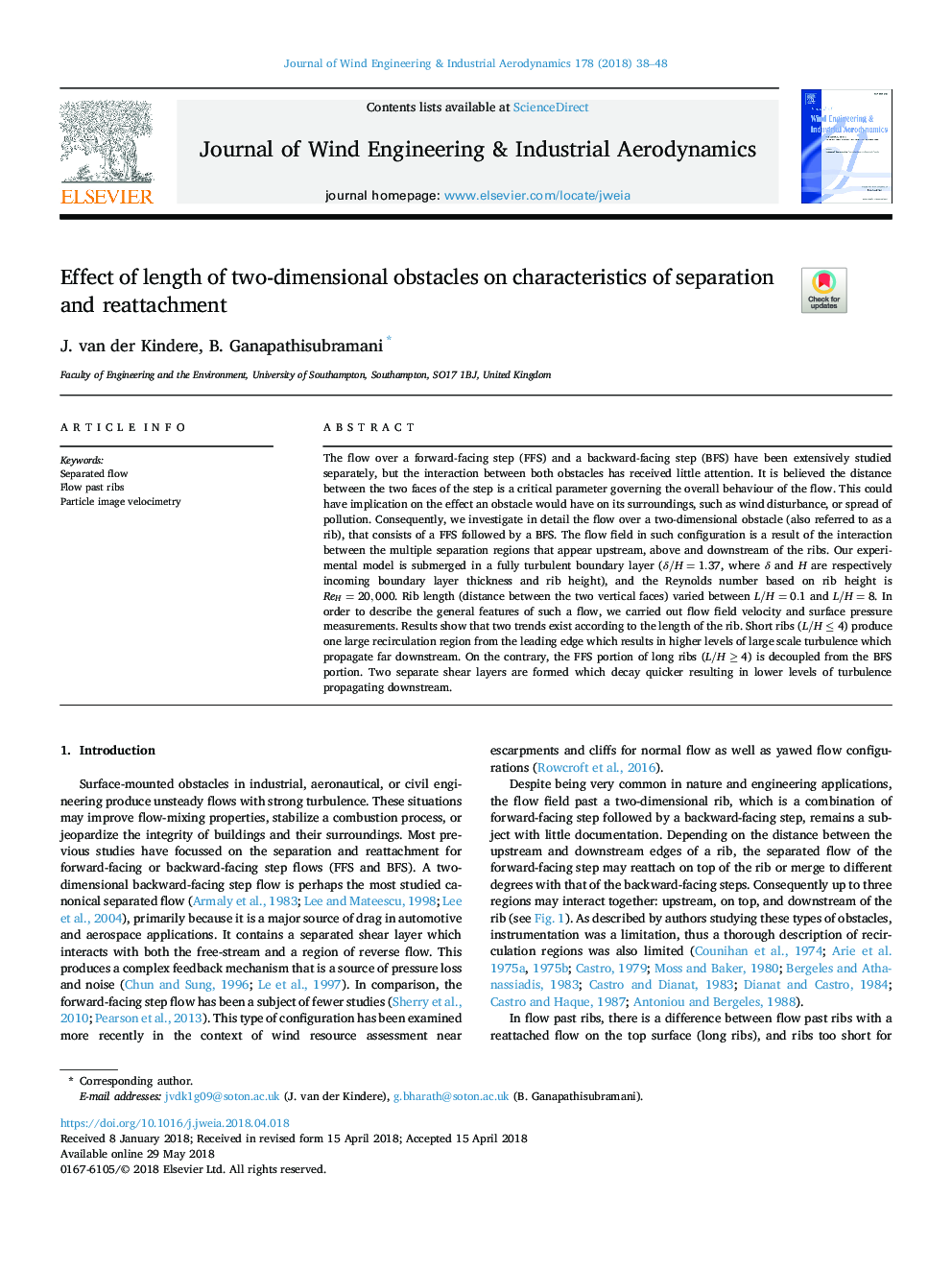| Article ID | Journal | Published Year | Pages | File Type |
|---|---|---|---|---|
| 6756851 | Journal of Wind Engineering and Industrial Aerodynamics | 2018 | 11 Pages |
Abstract
The flow over a forward-facing step (FFS) and a backward-facing step (BFS) have been extensively studied separately, but the interaction between both obstacles has received little attention. It is believed the distance between the two faces of the step is a critical parameter governing the overall behaviour of the flow. This could have implication on the effect an obstacle would have on its surroundings, such as wind disturbance, or spread of pollution. Consequently, we investigate in detail the flow over a two-dimensional obstacle (also referred to as a rib), that consists of a FFS followed by a BFS. The flow field in such configuration is a result of the interaction between the multiple separation regions that appear upstream, above and downstream of the ribs. Our experimental model is submerged in a fully turbulent boundary layer (δ/H=1.37, where δ and H are respectively incoming boundary layer thickness and rib height), and the Reynolds number based on rib height is ReH=20,000. Rib length (distance between the two vertical faces) varied between L/H=0.1 and L/H=8. In order to describe the general features of such a flow, we carried out flow field velocity and surface pressure measurements. Results show that two trends exist according to the length of the rib. Short ribs (L/Hâ¤4) produce one large recirculation region from the leading edge which results in higher levels of large scale turbulence which propagate far downstream. On the contrary, the FFS portion of long ribs (L/Hâ¥4) is decoupled from the BFS portion. Two separate shear layers are formed which decay quicker resulting in lower levels of turbulence propagating downstream.
Related Topics
Physical Sciences and Engineering
Energy
Renewable Energy, Sustainability and the Environment
Authors
J. van der Kindere, B. Ganapathisubramani,
